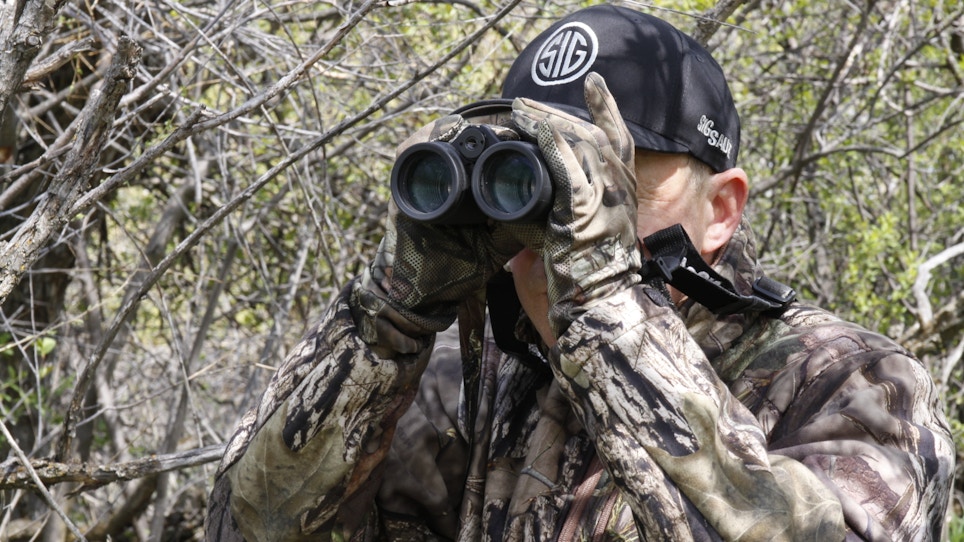
Summer scouting can help with morning hunts, which might be the best opportunity thanks to relatively cooler temperatures and coyotes being on the hunt for food. (Photo: Mark Kayser)
Coyote hunting doesn’t have to take a back seat in summer, but it does require a modification of hunting strategies.
These are the same coyotes you hunted with frost on the pumpkin, but a changing landscape and differing lifestyle duties require you to plan accordingly during the sunscreen season.
Query Landowners
Farmers and ranchers know their properties intimately year-round, but by the kickoff to summer they have visited most nooks of their deeded parcels. Planting, calving, fencing, roundups and other activities give them that firsthand look.
During this scrutiny it’s likely they’ve spied the rambunctious activity of a coyote den or two on their property. If you want a jumpstart to summer success query a landowner if they know of any den sites. These immediately become location No. 1 to target.
Any guarded adult in the nearby vicinity of a den will be spurred to visit your calls, particularly a coyote vocalization. Talk to your landowner contact first.
Glass Openings, Dawn and Dusk
If you’re looking for a new area to hunt or have the landowner coordinates to a coyote neighborhood, visit the area at dawn and dusk. You have two missions and both begin with long-range surveillance
First, scan for coyote movement. Although your landowner contact may be reliable, it’s always a smart move to confirm density and oftentimes coyotes repeat patterns like other animals. If you see one in a field one day it’s likely they’ll be there again on another day in the future. Listen and note any howls that may occur. Parenting coyotes sometimes keep quiet to avoid having visitors, but as pups grow everyone begins to test their lungs.
Second, use your binocular to glass from afar to study the playing field. Note predominant winds during these periods and look for topography to accentuate your set without intruding too far, and alerting your quarry. A good hunting app can help you discern distant high spots and maybe what lies behind a hill where the landowner noted a den location.
Hunt Mornings
Load up the shooting iron and get ready to hunt. Mornings prompt coyote activity as they tend to be the coolest period of a summer day. Temperatures dip to their lowest and dew also helps provide a cooling effect across the landscape. Animals will be more active, including coyotes.
If you can’t hunt mornings an early evening hunt also provides opportunity. This period of the summer day tends to be hotter. Keep this in mind as a coyote preparing for an evening hunt may leave its shady hideout and head directly to a water source to hydrate after a long day of panting.
Any call will work in summer as coyotes are busy feeding young and those youngsters are slowly being left to fend for themselves. Plus, as noted earlier, vocalizations spur adults and adolescents alike to investigate intruders.
Hunt Hayfields
In addition to heat you also have one other huge hindrance: vegetation.
An average whitetail measures approximately 3 feet at the shoulder whereas a coyote is a full foot or more shorter. In most cases you’ll be hunting in areas where vegetation completely cloaks a coyote while deer heads will be peeking over the top.
Fortunately, hay farming takes place throughout the summer and coyotes understand the importance of a good hayfield. The cutting of hay reduces cover and coyotes of all ages have an easier time locating rodents living in the once-dense, setting. Plus, occasionally hay equipment kills unlucky fawns and other game hiding in fear as machinery approaches. This meal opportunity attracts coyotes and you’ll have better chances to spot visiting coyotes in the clean field.
Hunt Pastures
Some areas simply don’t have hay farming nearby, but they may have cattle grazing. Hungry cows produce a similar effect. They trim a pasture and this creates less vegetation so you can see local coyotes better.
There is another bonus. Coyotes love to hang around livestock. Whether they are hoping for a bovine to experience a sudden heart attack or they simply enjoy the company is up for debate, but you’ll often discover coyotes living near a livestock herd.
Summer coyote hunting is basically the same as hunting them in fall and winter. You just need to adjust your game plan and visit a different playing field to enjoy sunscreen success.





